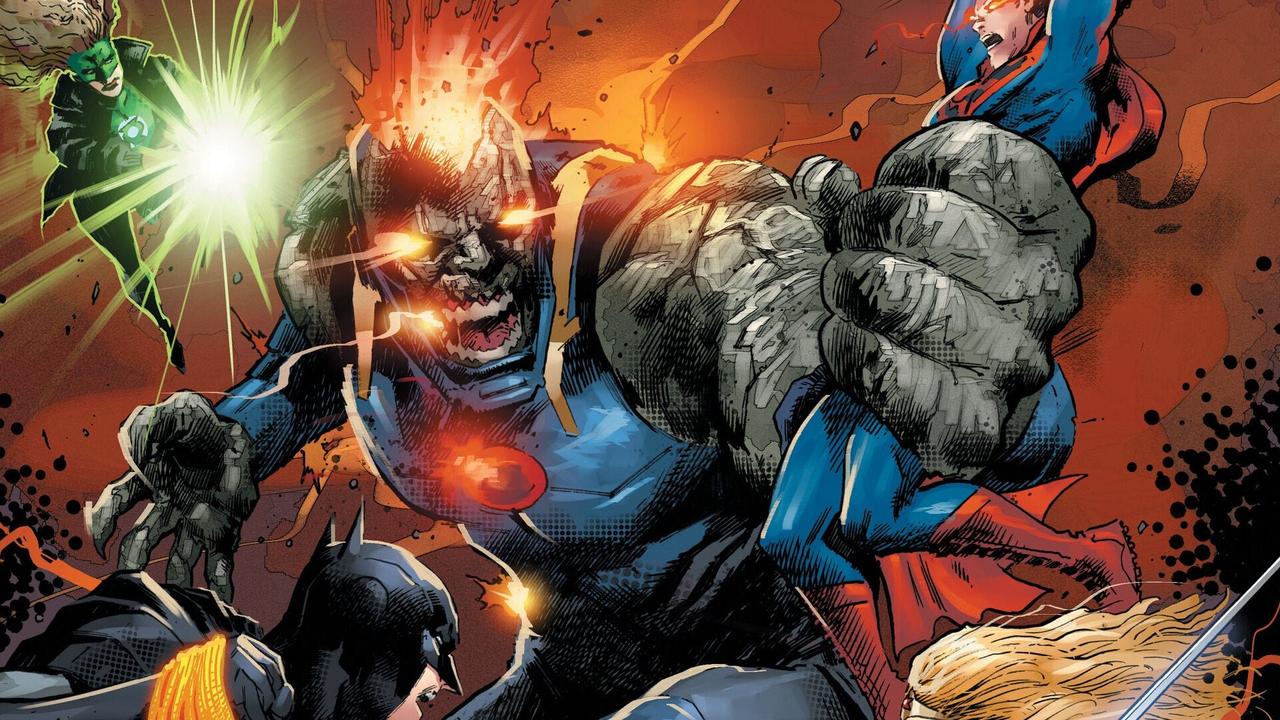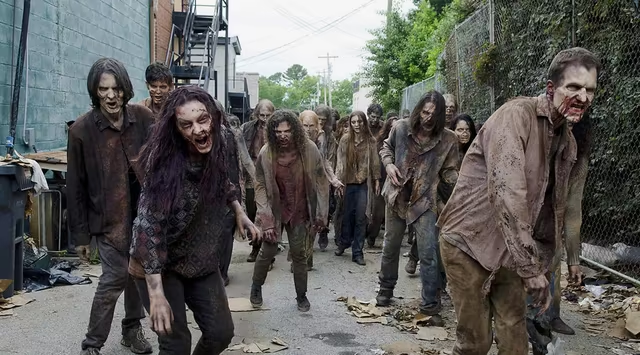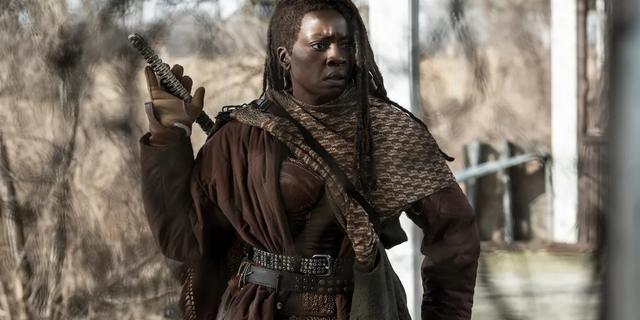If you click on a link and make a purchase we may receive a small commission. Read our editorial policy.
As the DCeased saga ends, Tom Taylor reveals all in spoiler-filled interview
As DCeased: War of the Undead Gods ends the horror-fueled take on the DCU, creator Tom Taylor reflects on saga’s conclusion

Ever since 2019, Tom Taylor, Trevor Hairsine, and Rain Beredo have thrilled readers with a significantly more terrifying version of the DC Universe in their line of miniseries and specials DCeased, co-created with the line’s original inker Stefano Guadiano. After the Anti-Life Equation is mutated by Darkseid and Cyborg, it grows uncontrollable and turns into the virus that infects much of the DCU, leading those infected to turn into ravenous, zombie-like hordes known as the Anti-Living. Humanity and a handful of surviving heroes and villains were able to relocate from Earth to a new planet but not before a staggering number of iconic heroes were killed as civilization collapsed in the face of the merciless contagion before them.
The DCeased saga comes to an end with the conclusion of its miniseries DCeased: War of the Undead Gods, with the creative team joined by Lucas Meyer, Andy Lanning, and Saida Temofonte. With the mutated Anti-Life Equation spreading across the cosmos, the heroes band together to eradicate the virus once and for all while identifying its sentient source as a malevolent entity known as Erebos. This leads to surprising transformations for many of the surviving characters while desperate alliances are forged, including the shocking return of Darkseid to help the heroes during their final battle, with the fate of universe hanging in the balance.
In an exclusive, spoiler-filled interview with Popverse, Tom Taylor explains the evolving ending to the DCeased saga, shares the inspirations behind the finale’s big moments, and reflects on DCeased’s legacy as it reaches its cosmic climax.

Popverse: Just as DCeased began with Darkseid's death unleashing the Anti-Life Equation contagion, Darkseid is back at the end of War of the Undead Gods #7 ready for revenge. How was it setting up this full circle moment for the DCeased Universe?
Tom Taylor: The story of DCeased has changed many times in the writing, but there were some ideas we had at the very start that we always wanted to deliver on. Undead Darkseid was definitely one of these. And curing Darkseid and having him join the universe’s heroes to take down something even stronger than he is was always on the cards. Darkseid unleashed this to begin with and was its first victim. It felt right that he should be there at the end.
How did you develop the idea of Erebos being the true villain of the war against the Anti-Living all along?
DCeased has had more than one ending, and pages certainly had to be discarded. The only thing I really miss is Mogo the Living Planet and Swamp thing having a buddy comedy relationship as they fuse and disperse the cure to planets across the universe.
The problem is, it’s hard to punch a virus, so something else had to be the root of it all. Something older and more powerful than anything we’ve faced before.
Coming up with Erebos was tricky, and I want to thank friend and writer, Gary Edwards, for the brainstorming session that got us to Erebos. With this being the war of the undead gods, and with new gods running around with old gods from Greek Mythology, it made sense to look to mythology for our answer. In Greek Mythology, Erebos, was the personification of darkness. It all fitted perfectly.
The final issue sets up Damian as the one to make the sacrifice play. How was it having him rise to this role across the entire saga?
Damian’s journey from DCeased, through Hope at World’s End, Dead Planet and now War of the Undead Gods, has seen him grow as a hero and also mature as a person. He’s become more pragmatic. He’s left more of that assassin behind and become a better Batman, so much so that it was clear he was the only hero who could do this.
And there was no escaping the ending of DCeased. It was all set up in issue 2 of the original DCeased series. Green Arrow telegraphed our ending when talking to Batman but looking at Robin. That Jon could be there for him in this moment, mirroring when he was there for him when he lost his father, was also important. Trevor Hairsine and Rain Beredo crushed this ending.

Everyone has lost substantially but Alfred Pennyworth in particular takes the focus across the saga. Why did you want to present a lot of the story through his eyes?
Each DCeased series has been narrated by a key character who we’ve kept hidden until the right moment. Thinking of all Alfred had lost, what was coming for Damian, and knowing that Alfred was going to be bonded to the Spectre made him the perfect narrator for War of the Undead Gods.
I’m a sucker for Alfred. He’s the father of so many great heroes and the batfamily would be nothing without his sacrifice and his love. So much of the DC universe starts with his decision to take Bruce in and care for him. It felt right that he would see the end of that legacy.
You, Trevor Hairsine, and Rain Beredo have been along for this whole horrific tour through the DCU. How was it coming together for this particular miniseries continuation and was there anything you wanted to change up?
Our wonderful editor, Ben Abernathy, knows this well, and has always helped out in this regard, but I ALWAYS would have taken more pages for every series, I would have even added whole issues.
There were plans for the Flashes who escaped to another dimension in Hope at World’s End and plans for Steph Brown, for Cyborg and Mogo and Swamp Thing and Poison Ivy and more that we just couldn’t fit. So, I’d say the only thing I’d want to change up about the work Trevor and Rain and I have done together, is that I wish we’d done even more, and that’s acknowledging that the whole saga is already five volumes long.
Across all of DCeased you've explored everything from the grounded end of the DCU to its magical and cosmic corners. How has bringing apocalyptic intensity to such a wide breadth of the DCU informed how you view these characters and their world as you continue to craft new stories in the main DCU, so to speak?
I think part of the appeal of DCeased is that it’s this enormous saga that we’ve tried to keep character focused. Through a global undead apocalypse all the way to a universal one, it’s always about the people more than the events. And because of the time period, we’ve been able to see these characters grow. For me, how I view these characters is tied to the way they’ve grown and aged in this series, and how they’ve dealt with everything that has come their way. So many heroes could have been crushed by what they’ve faced in DCeased. Most of our heroes were simply compacted into diamonds that sparkled more than ever.
All eight issues of DCeased: War of the Undead Gods are on sale now, with the hardcover collection on sale September 5 and currently available for preorder. The miniseries is written by Tom Taylor, penciled by Trevor Hairsine and Lucas Meyer, inked by Meyer and Andy Lanning, colored by Rain Beredo, and lettered by Saida Temofonte.
Follow Popverse for upcoming event coverage and news
Find out how we conduct our review by reading our review policy
Let Popverse be your tour guide through the wilderness of pop culture
Sign in and let us help you find your new favorite thing.
















Comments
Want to join the discussion? Please activate your account first.
Visit Reedpop ID if you need to resend the confirmation email.